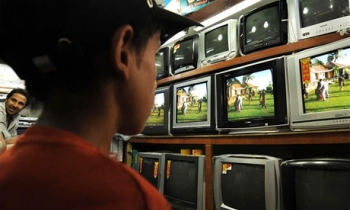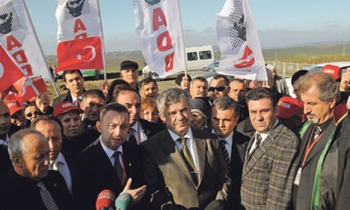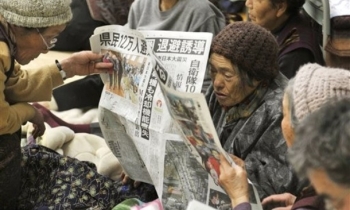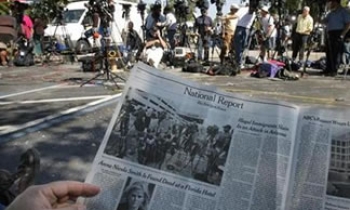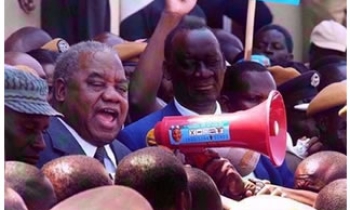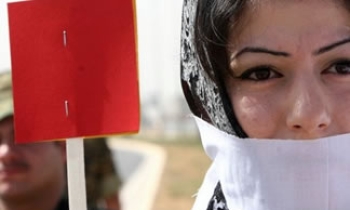More than half of the top five Sunday morning talk shows in the United States (US) do not include a single female guest, while male experts featured in the US news media outnumber women nine to one, a new study has revealed. The study, conducted over an eight-month period by the White House Project looked at the Sunday political talk shows on NBC, ABC, CBS, CNN, and FOX.

A new online resource, SheSource.org launched on October 11, aims to transform these statistics. SheSource.org has been formed to balance the representation of men and women on these shows and within other news outlets, such as newspapers, news magazines, and radio.
The White House Project study, Who's Talking Now, found that women, when compared to men, appeared as guests on these shows only 14 per cent of the time. The study discovered that when women leaders and experts were identified, they were significantly less likely to make repeat appearances and they were more likely to be guests during later, less important segments of the show.
While there was a slight increase in women's appearances on these programmes since the White House Project's 2001 report, Who's Talking?, the number of appearances by men still greatly outnumbers those by women.
Since the first study in 2001, the networks’ combined record on the inclusion of women has remained largely unchanged. The study indicates an overall increase of 3 per cent in female guest appearances on the five major broadcast networks’ Sunday morning talk shows. In the initial study, conducted between January 1, 2000 and June 30, 2001, women comprised 11 per cent guest appearances. In the second study from January 2002 to June 2002, women’s appearances increased to 13 per cent. In this recent research, conducted between November 7, 2004 and July 10, 2005, the number has risen to 14 per cent.

Some networks, however, have shown a much greater increase than the five network average of 3 per cent. CBS, for example, doubled its percentage of female guests, from 9 per cent in 2001 to 18 per cent in 2005. NBC showed a sizeable increase, up from 9 per cent in 2001 to 16 per cent in 2005. FOX improved its percentage from 9 per cent to 12 per cent. ABC remained steady at just under 15 per cent. CNN, however, declined from 14 per cent in 2001 to only 11 per cent in 2005.
Of all guests appearing on the Sunday morning talk shows, female guests were significantly less likely to have repeat appearances. There were 186 repeat appearances by male guests but only 37 repeat appearances by female guests. This, the report pointed out, further illustrates the role the networks play in providing visibility to women and further demonstrates that low percentages of female guests reflect network choices rather than a dearth of female leaders. Women comprise more than 50 per cent of the US population, but are only about 15 per cent of elected officials nationwide. Moreover, the US ranks 63rd in the world with respect to women’s political representation.
Since Sunday morning talk shows play an important role in shaping the nation’s political agenda and have the power to confer expert status on their guests, the report said, "we believe that an increase in the number and frequency of appearances by women on these shows would improve the public perception of women. And, more specifically, it would provide a more accurate reflection of their present status as experts, leaders and authority figures."

The White House Project's report is part of a larger debate over the representation of women’s voices in the media. In March, a debate began between Susan Estrich of FOX News and Michael Kinsley, op-ed editor of the Los Angeles Times, where women wrote a mere 20 per cent of op-ed columns over a nine-week period.
FAIR, (Fairness and Accuracy In Reporting), collated data from January-February 2005, and showed that the Los Angeles Times was not alone in its dearth of women pundits: women constitute only 17 per cent of opinion writers at The New York Times, 10 per cent at the Washington Post, 28 per cent at U.S. News & World Report, 23 per cent at Newsweek, and 13 per cent at Time. Overall, only 24 per cent of syndicated columnists in the US are women, and they tend to be white and right-wing. A notable exception is United Features newspaper syndicate, half of whose columnists are women.
In response to the conspicuous lack of women experts in the media, the White House Project, the Women's Funding Network, and Fenton Communications have launched SheSource.org, a database of women experts and leaders in a variety of fields including politics, crime, and national security who are available for interviews.
"The sooner we have a more representative offering of female leaders in the media, the closer we will be to having a true democracy," said Marie C Wilson, president of the White House Project. "The news we receive currently comes from male voices and perspectives. By including commentary and opinion from women experts in areas like national security, foreign policy and terrorism, we enrich the debate. Producers and bookers have told us that they would gladly book more qualified women experts if they knew how to locate them. Now with SheSource they'll know exactly where to look."

SheSource.org experts include women in areas where they are often overlooked, such as national security, the economy, and international affairs. SheSource.org will allow journalists to conduct online database searches for experts in major issue areas. As of now, there are 75 experts in the SheSource.org line-up.
Moreover, SheSource.org will have publicists pitching and placing women commentators to respond to breaking news and top news stories of the day. In its first year, SheSource.org will operate as a pilot programme in which the journalists who use it can provide feedback to ensure that SheSource is best serving the needs of the media.

